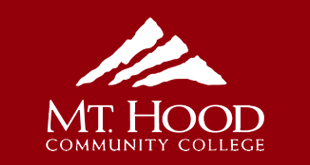THE CONTINUED IMPACT OF COVID-19 AND THE FUTURE OF MHCC

The COVID situation is still ongoing, and MHCC leaders are still attempting to do their best to provide resources and classes for students amid the chaos. While this in and of itself is not news, there are still some large, looming questions:
⦁ How is the college being impacted by COVID?
⦁ Will there be a reopening anytime soon?
⦁ What will the college’s future be like?
A recent interview with Diane Noriega, who chairs the MHCC District Board of Education, offered few concrete answers, but it’s safe to say that while the short-term future is shaky, there is hope.
Among the topics discussed was the well-being of the college, as concerns student enrollment and the financial side of things. Enrollment is perhaps not the most pleasant issue to discuss at present, as it can be best described as a rollercoaster. Using projections derived from local birth rates and other data, the prediction for Mt. Hood is that enrollment will continue to decline, as it has for several years now, Noriega said.
There is a slight positive bump predicted, but more decline is expected after that.
Financially, the college is in an interesting place, said Noriega. It has received assistance from the federal/state governments, in the form of various COVID-related relief packages. There is a third payment to come, which is projected to help close the estimated $4.4 million deficit in
MHCC’s operating budget for 2021-22. But the worry with these relief packages is that they are one-time things, she noted.
On the student side of things, there is some good news. At this point, the Board has ruled out a tuition increase (Noriega said this with “90% confidence”) and has waived the distance learning fee charged to students, given the mass switch to online instruction since April 2020.
Ultimately in situations like this, Noriega said, the Board members “just take it day by day” in responding to shifting circumstances.
One of the really hot topics right now is if or when the college will reopen its doors to in-person instruction.
The current best projections are for Fall Term. There has not been an official decision made yet, with the deadline for such a decision – based on a plan from President Lisa Skari and top administrators, which would then need final Board approval – a pretty late one, said Noriega.
All factors considered, including widespread vaccinations and fewer cases of COVID, things should be improved for Mt. Hood’s outlook by July, Noriega hopes. While such late decision making is always crazy, as she put it, “I suspect we won’t be making it until summer, the final decision.”
Regardless of when reopening occurs, there is nearly a guarantee that COVID will have affected course delivery for MHCC students in the long run, Noriega said.
Some programs work well with online learning, while others don’t, and there has been much effort from the college’s faculty to pull off the almost entirely online format students are currently operating under. While that won’t all be scrapped when reopening happens, there are some programs that really do require face-to-face interaction, Noriega said.
In sum, of instruction in the long run, “It’s going to be different. It’s not going to be like it was before the pandemic, I’m sure,” she said.
Another aspect to consider in all of this is how the future looks, so far as Mt. Hood’s satellite campuses go – including the Maywood Park campus and the Bruning Center for Allied Health Education.
For more than four decades, there has not been success in winning public approval of a property tax-funded bond measure to rebuild or improve those facilities. However, the Board still sees a need for them, Noriega said. At present, though no improvements will be made. “Those will still be operational,” she said.
Overall, MHCC has been attempting its best to function through the craziness of COVID. Things are not all bright and shiny, but there is hope for the overall health and future of Mt. Hood, Noriega said.
“The college is still going to be there, it’s not going anywhere, and we are still going to maintain the programs that [help] our students and community, and keep it affordable.”

Leave a comment